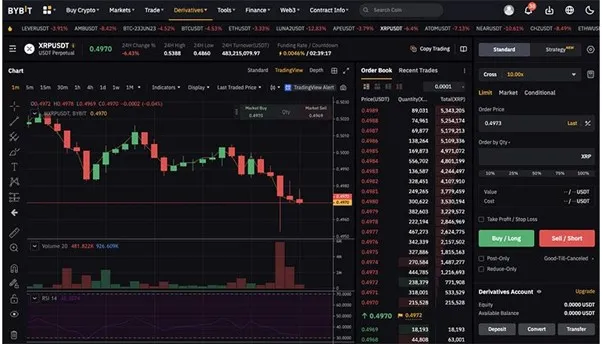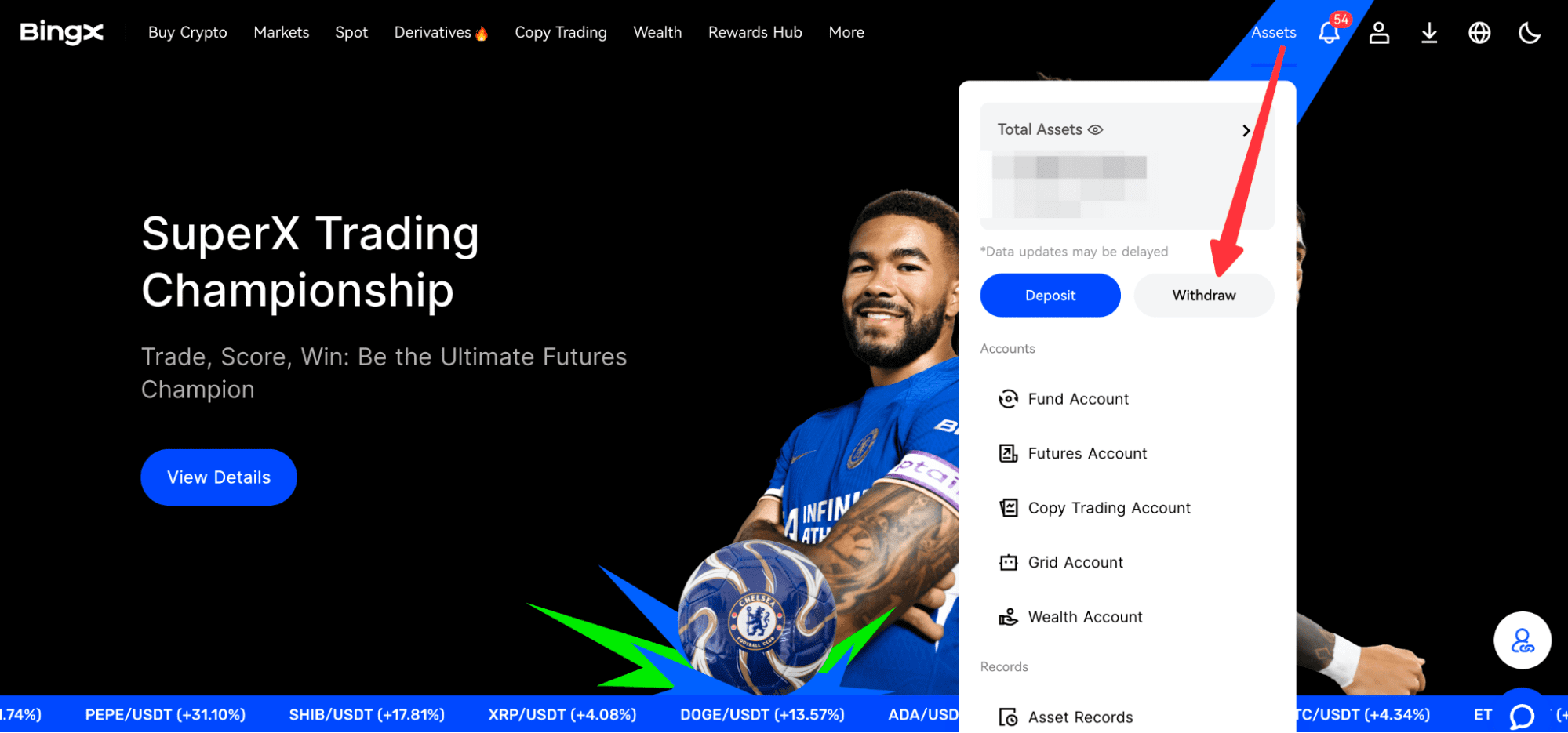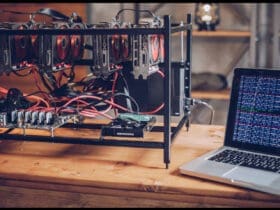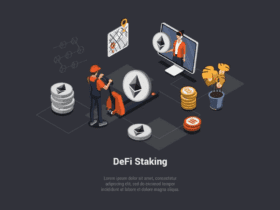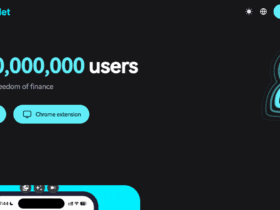In this article, I will discuss the Best Aggregator For Bridging NFTs Cheaply. With the growing popularity of NFTs across multiple blockchains, finding cost-effective and reliable solutions for transferring assets is essential.
Aggregators like Portal, Allbridge, and Celer cBridge help users move NFTs efficiently, minimizing fees and ensuring secure, seamless cross-chain transfers for collectors, traders, and developers alike.
Key Points & Best Aggregator For Bridging Nfts Cheaply List
| Aggregator | Key Features | Supported Chains | Best For |
|---|---|---|---|
| Portal (Wormhole) | Supports 30+ blockchains, NFT transfers via ERC-721 & SPL, validator-based security. | Ethereum, Solana, Aptos, Sui, and more. | Advanced interoperability & NFT bridging. |
| Allbridge | Easy bridging, NFT support, user-friendly interface. | Ethereum, BNB Chain, Polygon, Avalanche, and others. | Beginners seeking simple cross-chain transfers. |
| Celer cBridge | Low-cost, ultra-fast cross-chain transfers, NFT support, works on EVM & non-EVM chains. | Ethereum, Optimism, Arbitrum, BNB Chain, Avalanche, etc. | Cost-efficient transfers across EVM + non-EVM. |
| deBridge | Native multi-chain interoperability, seamless token & NFT swaps. | Ethereum, BNB Chain, Polygon, Arbitrum, and more. | Developers building dApps needing multi-chain support. |
| Rango Protocol | Aggregates multiple bridges & DEXs, ensures best routing, NFT transfers. | Cosmos, EVM chains, Solana, and others. | Users seeking best price routes across multiple bridges. |
| Jumper Exchange | 20+ connected networks, no-fee transfers, best price guarantees, NFT bridging. | Ethereum, Avalanche, Polygon, BNB Chain, etc. | Low-cost NFT and token transfers with price assurance. |
| Across Protocol | Intents-based secure architecture, fast low-cost transfers, NFT support. | Ethereum L2s (Arbitrum, Optimism, zkSync), Polygon. | Ethereum ecosystem cross-chain efficiency. |
| Axelar Network | Secure cross-chain communication, interchain dApps, NFT bridging. | Ethereum, Cosmos, Avalanche, Polygon, more. | Web3 developers & interoperable dApp builders. |
| Carrier Protocol | Specializes in token & NFT bridging for Web3 natives, supports multi-chain. | Multiple EVM chains + growing non-EVM support. | Web3 users looking for NFT-focused solutions. |
| LI.FI | Combines cross-chain bridges with DEX aggregation, NFT transfers, supports DeFi. | Ethereum, Polygon, Avalanche, Arbitrum, and more. | Next-gen DeFi projects & NFT traders. |
10 Best Aggregator For Bridging Nfts Cheaply
1.Portal (Wormhole)
Portal, utilizing the Wormhole protocol, enables cross-chain NFT transfers across more than thirty distinctive networks, comprising Ethereum, Solana, Aptos, and Sui. By accommodating both ERC-721 and SPL specifications, it achieves extensive interoperability.

Security is anchored by an expanse of decentralized validators while an intuitive graphical interface further streamlines the bridging operation for non-fungible tokens.
Features Of Portal (Wormhole)
- Delivers cross-chain NFT passage across 30+ networks, encompassing Ethereum, Solana, Aptos, and Sui.
- Accommodates both ERC-721 and SPL token specifications without requiring code changes.
- Leverages a censorship-resistant validator overlay for tamper-proof asset custody.
- Presents a streamlined UI to minimize gas expenditure and onboarding friction.
2.Allbridge
Allbridge functions as a comprehensive cross-chain bridge, facilitating the transfer of both non-fungible tokens and fungible tokens across numerous blockchain environments, among which Ethereum, BNB Chain, and Polygon are prominently featured.

By offering a seamless bridging interface alongside competitive, transparent fee structures, the platform distinguishes itself as a preferred mechanism for economical cross-network NFT movement. Its user-centered architectural design further lowers the barrier to entry for both novice and experienced participants, promoting broad adoption.
Features Of Allbridge
- Consolidates bridging for NFTs and fungible tokens across Ethereum, BNB Chain, and Polygon in a single flow.
- Sets competitive fee and latency benchmarks to benefit both retail and institutional transfers.
- Delivers a straightforward interface that features one-click transaction finality.
- Maintains an evolving integration roadmap to encompass emerging and niche layer-1 ecosystems.
3.Celer cBridge
Celer’s cBridge stands as a premier framework for rapid and inexpensive multi-chain transfers, including non-fungible tokens (NFTs) across a wide spectrum of blockchains. The platform employs a proprietary architecture that combines on-chain smart contracts with the Celer State Guardian Network, effectively fortifying transfer security and dependability.
This seamless integration guarantees that NFT migrations between chains are executed with minimal latency and complete asset integrity. cBridge’s architecture is engineered for exceptional scalability

Tolerating upward spikes in transaction volume while sustaining fee levels that remain significantly below industry averages. Its extensive compatibility with predominant chains, in conjunction with an intuitive graphical interface, positions cBridge as the preferred mechanism for NFT collectors, market participants, and developers who require reliable cross-chain functionality within their workflows.
Features Of Celer cBridge
- Combines optimistic and zk-custodial proofs to achieve latency-optimized, low-cost NFT transfers.
- Relies on the Celer State Guardian Network to overlay a security layer for transaction finality.
- Employs a layer-2-like architecture that dynamically provisions compute to future-proof capacity.
- Ensures cross-asset composability through a hybrid protocol that supports 90+ blockchains.
4.deBridge
deBridge constitutes an adaptable cross-chain infrastructure facilitating rapid, secure transfer of non-fungible tokens (NFTs) among Ethereum, Solana, and other leading blockchains. By utilising aggregated on-chain liquidity pools combined with guaranteed exchange rates, it guarantees economical and predictable bridging costs for participants.

The platform’s modular architecture caters to both developers and end-users, supporting frictionless integration and NFT interoperability across heterogeneous ecosystems. Prioritising operational efficiency, security, and architectural extensibility, deBridge delivers a trusted mechanism for NFT migration, concurrently minimising transaction costs and eliminating unnecessary latency.
Features Of deBridge
- Specializes in Ethereum-to-Solana transfers by deploying relay nodes to accelerate NFT finality.
- Utilizes on-chain liquidity pools to minimize slippage and bid-ask differentials on every route.
- Adopts a plug-in architecture to accommodate custom nft, token and identity layer developers.
- Delivers standard ERC metadata payloads to guarantee consistent representation across varying wallet UI.
5.Rango Protocol
Rango Protocol operates as a sophisticated cross-chain aggregator that synthesizes a multitude of decentralized bridges and exchanges to accelerate and economize NFT transfers across heterogeneous blockchain environments.
By algorithmically directing each transaction through optimal, low-latency pathways, the protocol minimizes both on-chain and gas costs while concurrently expediting transfer speeds, rendering cross-chain NFT mobility both economical and frictionless.

Rango’s exhaustive interoperability architecture extends support to a wide array of networks, encompassing Ethereum, BNB Chain, Polygon, and additional ecosystems. The platform is architected for high configurability: users can migrate NFTs across chains with a deterministic assurance of sustained security and operational efficiency.
This fusion of convenience and reliability positions Rango as the premier option for NFT collectors, liquidity seekers, and developers who require dependable and transparent cross-chain capabilities.
Features Of Rango Protocol
- Aggregates the most efficient bridges and decentralized exchanges to optimise cross-chain NFT routing.
- Dynamically reduces bridging expenses while accelerating the velocity of asset movement.
- Covers a broad spectrum of blockchain environments to deliver seamless cross-chain interoperability.
- Delivers a tamper-proof yet expedient experience specifically engineered for NFT asset migration.
6.Jumper Exchange
Jumper Exchange constitutes a highly scalable cross-chain environment linking more than twenty-five blockchains and facilitating the rapid bridging and exchange of non-fungible tokens. By synthesizing decentralized finance liquidity from a spectrum of accredited aggregators, the service delivers highly competitive valuation with negligible fee exposure for cross-chain asset transfers.

Its interface, deliberately framed around user-experience heuristics, abstracts the complexities of multi-chain bridging, thereby accommodating both non-specialists and seasoned cryptographic investors. Rapid finality, cryptographic settlement assurances, and extensibility to all integrated ledgers combine to present a dependable and cost-optimized utility for transiting NFTs across heterogeneous digital environments.
Features Of Jumper Exchange
- Links over twenty-five layer-1 and layer-2 environments for NFT bridging and seamless asset swapping.
- Pools DeFi liquidity to yield highly competitive exchange rates and minimal fee drag.
- Intuitive front-end accommodating first-time users and sophisticated traders alike.
- Executes rapid, encrypted NFT transfers across heterogeneous blockchain ecosystems.
7.Across Protocol
Across Protocol represents an advanced cross-chain infrastructure that leverages an intent-based interoperability paradigm to facilitate swift and economical NFT migrations. At its core lies a modular settlement layer augmented by bespoke bridge hooks that automate cross-chain escrow, thereby optimizing latency and minimizing transaction costs.

The architecture addresses both developer and consumer requirements: a comprehensive developer toolkit abstracts consensus variances, permitting rapid and standardized deployment among disparate networks. Rigorous attention to security, open governance, and cohesive user journeys collectively position Across Protocol as a secure and forward-thinking mechanism for NFT traversal across heterogeneous blockchain environments.
Features Of Across Protocol
- Applies intent-based cross-chain messages to realise low-fee NFT movement.
- Modular settlement layer and on-chain bridge hooks harmonise interoperability functions.
- Comprehensive developer toolkits enable straightforward cross-ecosystem application integration.
- Protocol-wide security audits and multi-signature enhancements enforce dependable asset transit.
8.Axelar Network
Axelar Network is a decentralized framework engineered for secure, frictionless cross-chain messaging that caters specifically to non-fungible token (NFT) mobility across heterogeneous blockchain environments. Its Interchain Token Service (ITS) permits the seamless transfer of NFTs and associated digital goods, guaranteeing comprehensive interoperability without compromise.

Foundational to the platform’s design is a dedicated focus on elevated security, sustained reliability, and optimized operational efficiency, ensuring that cross-chain activities are performed swiftly at minimal cost. By delivering compatibility with a broad array of blockchains and equipping engineers with developer-centric kits, Axelar Network furnishes both end-users and architects of blockchain solutions the confidence to transfer NFTs cross-chain, thereby establishing a versatile, future-proof architecture for the expanding cross-chain NFT sector.
Features Of Axelar Network
- Decentralised architecture delivers intrinsically secure NFT transfers between disparate environments.
- Interchain Token Service (ITS) exposes a unified interface for seamless cross-chain asset logic execution.
- Supports a rich array of mainnets and app-specific chains to maximise NFT reach.
- Resilient validator and routing infrastructure guarantees availability and low transaction costs.
9.Carrier Protocol
Carrier Protocol constitutes an advanced ecosystem engineered to interoperate tokens and NFTs across heterogeneous blockchain environments within Web3 contexts. Its architecture is deliberately oriented toward scalable throughput, thereby ensuring low-latency and high-availability transfers irrespective of network congestion, complemented by layered cryptographic safeguards that maintain asset integrity throughout asset passage.

The framework is explicitly curated for developer consumption, offering extensive compliance with prevailing NFT specifications, alongside parameterized, well-documented integration pathways, thereby lowered cumulative friction for projects integrating cross-chain NFT circuitry. By abstracting chain heterogeneity, Carrier Protocol thereby supplies an indispensable utility for teams seeking to engineer frictionless, incremental, and economically rational NFT inter-exchange across divergent digital ecosystems.
Features Of Carrier Protocol
- Concentrates exclusively on the efficient bridging of fungible tokens and non-fungible assets for Web3.
- Massively elastic architecture repeatedly scales to thousands of concurrent cross-chain transfers without congestion.
- Supports multiple NFT standards to ensure wide-ranging interoperability.
- The platform prioritizes developers, furnishing them with tools to seamlessly integrate cross-chain NFT features.
10.LI.FI
LI.FI is an enhanced cross-chain bridge and decentralized exchange (DEX) aggregator engineered to enable secure and streamlined transfer of non-fungible tokens (NFTs) across heterogeneous blockchain ecosystems. By employing algorithmic path optimization, LI.FI reduces both gas overhead and latency, empowering participants to execute cross-chain NFT moves with minimal economic and temporal expenditure.

The service interfaces with a diverse array of decentralized finance (DeFi) protocols and complies with prevailing NFT token standards, assuring interoperability across heterogeneous application landscapes.
Its intuitive graphical front-end, combined with a highly scalable architecture, addresses the operational needs of both protocol developers and retail users, positioning LI.FI as a dependable and adaptable conduit for NFT bridging that materially improves the cross-chain operational fabric within the decentralized landscape.
Features Of LI.FI
- Acts as both cross-chain bridge and DEX aggregator, facilitating NFT transfers.
- Employs intelligent pathfinding to minimize fees and expedite settlement.
- Broad coverage of DeFi protocols combined with firm support for divergent NFT standards.
- Features an intuitive interface coupled with resilient infrastructure for dependable cross-ecosystem transfers.
Conclsuion
In conclusion Selecting an optimal aggregator for economical NFT bridging necessitates consideration of throughput, security, and cross-chain operability. Services such as Portal, Allbridge, Celer cBridge, and LI.FI provide affordable and frictionless custody-shift across diverse blockchains.
Intuitive user interfaces, minimal transactional levies, and resilient underlying architectures together render the NFT conveyance process not only efficient but also dependable, thereby enabling collectors, market participants, and developers to transfer cryptographic assets with confidence while preserving the imperative of cost containment.
FAQ
It’s a platform that connects multiple blockchains, allowing NFTs to move across networks efficiently and cheaply.
Popular options include Portal (Wormhole), Allbridge, Celer cBridge, deBridge, Rango Protocol, Jumper Exchange, Across Protocol, Axelar Network, Carrier Protocol, and LI.FI.
Most use secure smart contracts and validator networks, but always check platform reputation and fees.


